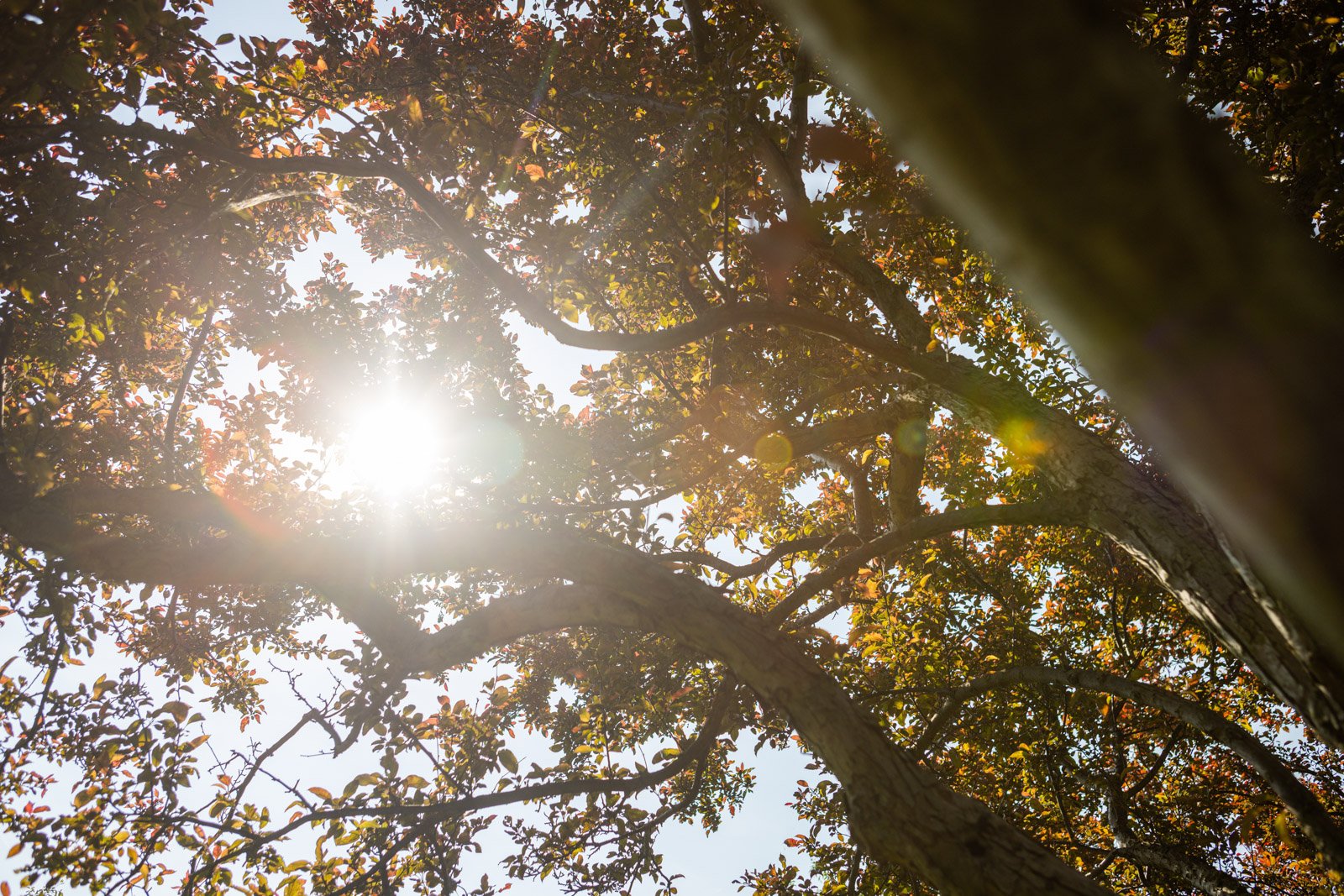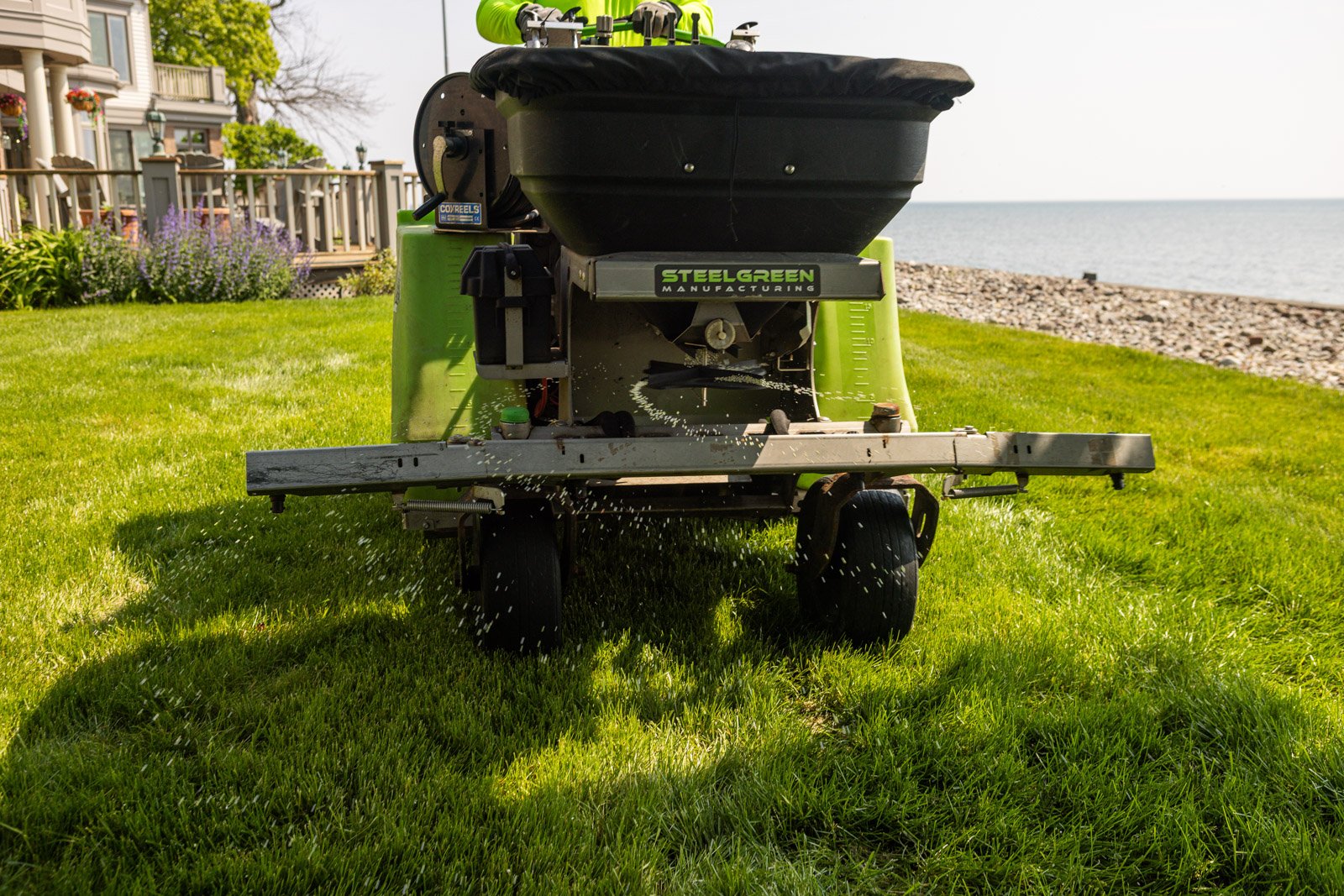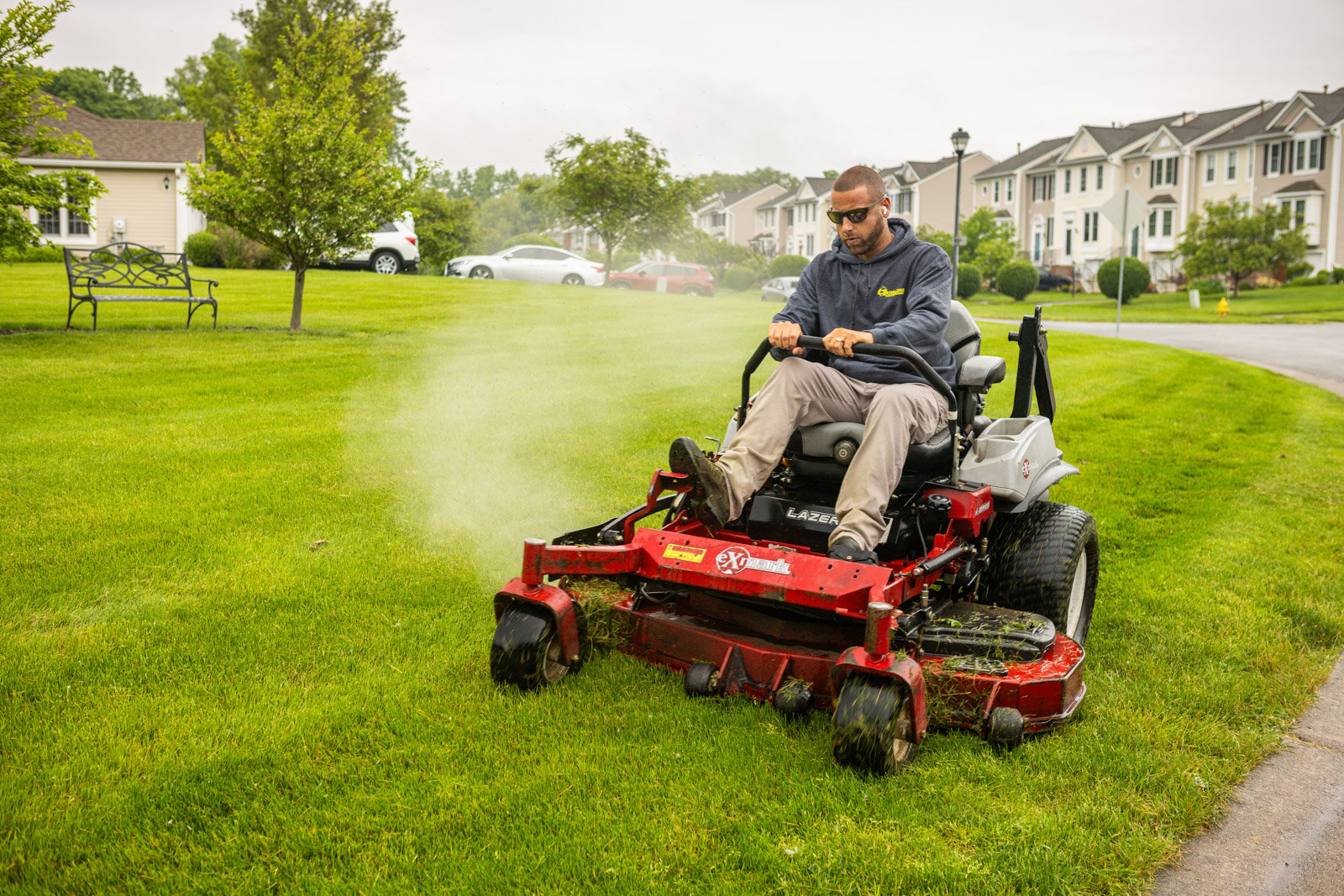- Lawn Care
- 3 min read
5 Tips to Prepare Your Lawn for Winter in Rochester, NY
Between apple picking, pumpkin patches, football games, and cozy evenings by the fire, lawn care probably isn’t making it to the top of your fall to-do list. It’s easy to think your grass will be just fine until spring.
Skipping lawn prep for winter can leave your turf vulnerable to a variety of issues and make it tough for it to bounce back in the spring. Let’s cover why lawn prep matters and five simple steps you can get started on today to help your lawn stay protected through the cold.
Why Lawn Prep for Winter Matters
How to Prep Your Lawn for Winter: 5 Tips
Why Professional Lawn Care Pays Off for Winter
Why Lawn Prep for Winter Matters
If you’ve lived through a Rochester winter, you already know your lawn is in for a rough few months. Heavy snow, frequent freeze-thaw cycles, and long stretches of dormancy can take a serious toll on your grass. That’s why lawn care in winter actually starts before the snow falls.
When leaves or debris are left sitting on your lawn, they trap moisture and block sunlight. Unfortunately, this creates the perfect environment for snow mold disease to develop. All that extra cover also gives voles and mice a cozy place to hide, chew, or create paths through your turf under the snow. A little effort now to clean up, strengthen roots, and protect your grass will make all the difference come spring. With the right prep, your lawn can rest easy through the winter and bounce back green and healthy when the weather warms up.
How to Prep Lawn for Winter: 5 Tips
Now that you know why winter prep matters, let’s talk about how to do go about preparing grass for winter in Rochester, NY. A few smart steps in the fall can protect your lawn from snow and ice and set the stage for a healthy comeback. Here are five simple, effective ways to give your lawn the best possible start before winter settles in.
1) Start with Leaf Removal
One of the best ways to prepare your grass for winter is to stay on top of leaf cleanup throughout the fall, especially before the first snow arrives. When leaves pile up, they block air and sunlight, which prevents your lawn from breathing properly. Over time, that trapped moisture can weaken the grass and lead to bare or matted spots come spring.
You don’t always have to bag every leaf. If the leaf layer is light and the leaves are dry, you can mulch them with your mower. This simply means mowing over them, cutting them into tiny pieces. These tiny leaf pieces actually benefit your soil by adding organic matter and nutrients. However, if leaves are thick or wet, it is best to rake or bag them up so they don’t form a dense mat that smothers the turf.
2) Winter Lawn Fertilizer
Before the ground freezes, your grass needs one last boost to get it through the cold months ahead. The right winter lawn treatment, usually applied in late October to November, helps your turf store the nutrients it needs to survive winter dormancy and bounce back strong in spring.
At Trimline, we use a slow-release winterizer fertilizer that is higher in potassium to promote deeper root growth and improve stress tolerance. This nutrient blend helps your lawn stand up to freezing temperatures, snow cover, and the freeze-thaw cycles Rochester is known for. Because it’s slow-release, the fertilizer continues feeding your lawn gradually over several weeks.
3) Turf Aeration
Aeration is one of the best things you can do for your lawn before winter. In Rochester, early to mid-September is the ideal time to schedule this service, especially if you plan to pair it with overseeding. Aeration works by removing small plugs of soil from your turf, which relieves compaction and creates space for roots to breathe and grow.
Overall, aeration helps air, water, and nutrients travel deeper into the soil, right where your grass needs them most. It also gives new seed better contact with the soil, improving germination and helping fill in thin areas before winter dormancy. Relieving soil compaction through aeration is like giving your lawn time to take a few deep breaths and refuel after running a marathon all summer long.
4) Lawn Overseeding
If your lawn has bare patches or looks a little thin heading into fall, overseeding can make a big difference. The best time to overseed in Rochester is September, before the first frost, when soil temperatures are still warm enough for seed to germinate and establish roots. Pairing overseeding with aeration helps new seed establish strong soil contact and take hold before winter arrives.
5) Final Lawn Mowing
Before winter sets in, give your grass one last cut, typically in late October to early November here in Rochester. As growth slows, lower your mower height so you’re trimming the lawn down to about 2.5 to 3 inches. Make sure your mower blades are sharp in order to avoid tearing the grass before dormancy. This shorter height helps prevent the grass from matting down under snow, and still leaves enough length to protect the crown of the plant.
Mow only when the grass is dry and avoid cutting it too short - this can stress the turf right before dormancy. That final mow helps your lawn head into winter neat, tidy, and ready to come back strong in spring.
Partnering with Trimline for Lawn Care Services in Rochester, NY, Monroe County, and Surrounding Communities
Winter can be especially tough on Rochester lawns, but with the right preparation, yours can come back greener and thicker than ever next spring. From leaf cleanup and aeration to fertilization and mowing, each step plays a big role in protecting your turf through the long, cold months.
Our team at Trimline understands exactly what your lawn needs before winter hits, and uses the right timing, products, and techniques to get results you can see.
Need some help preparing your lawn for winter in Rochester? Get started by filling out our contact form.
